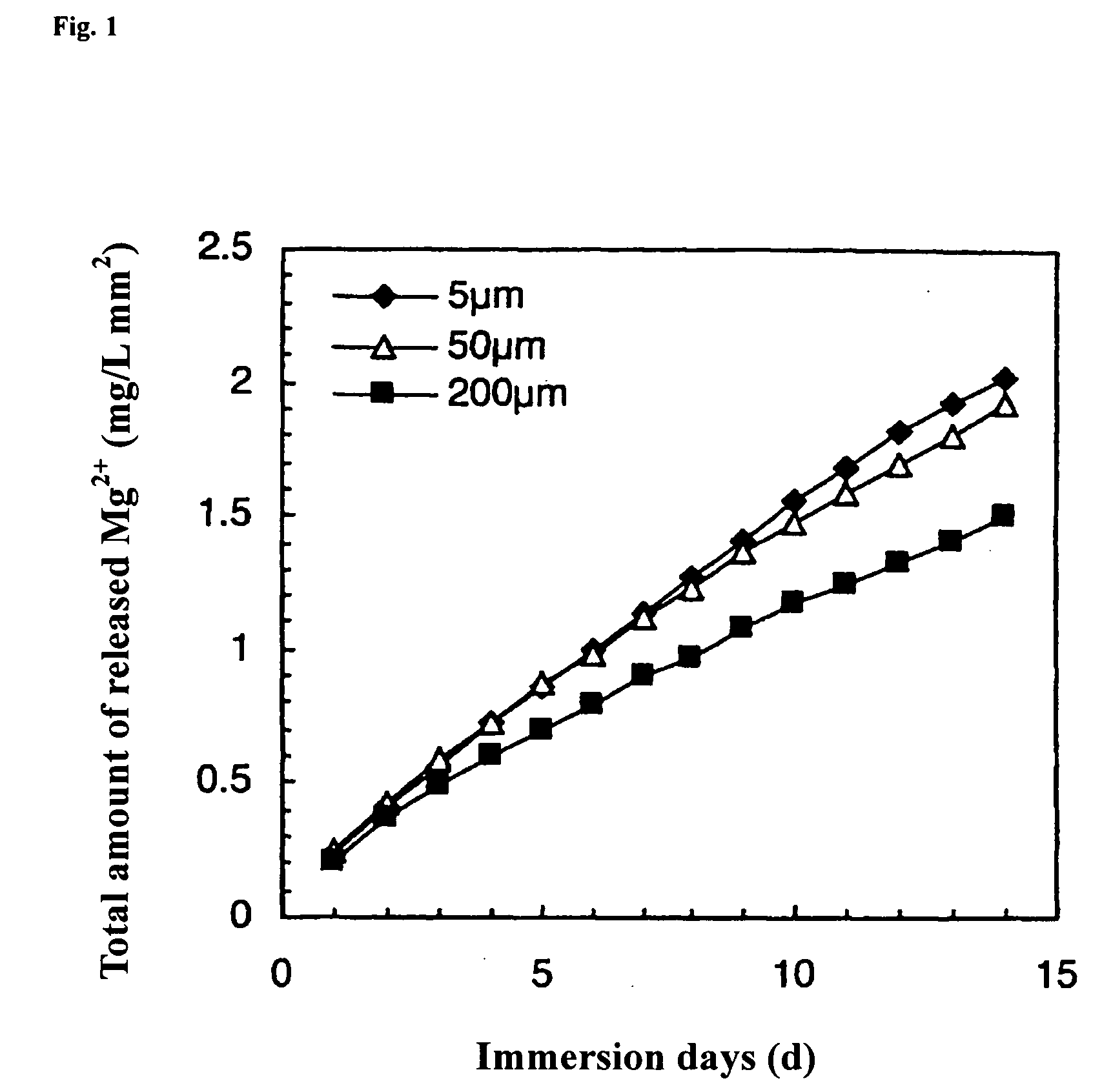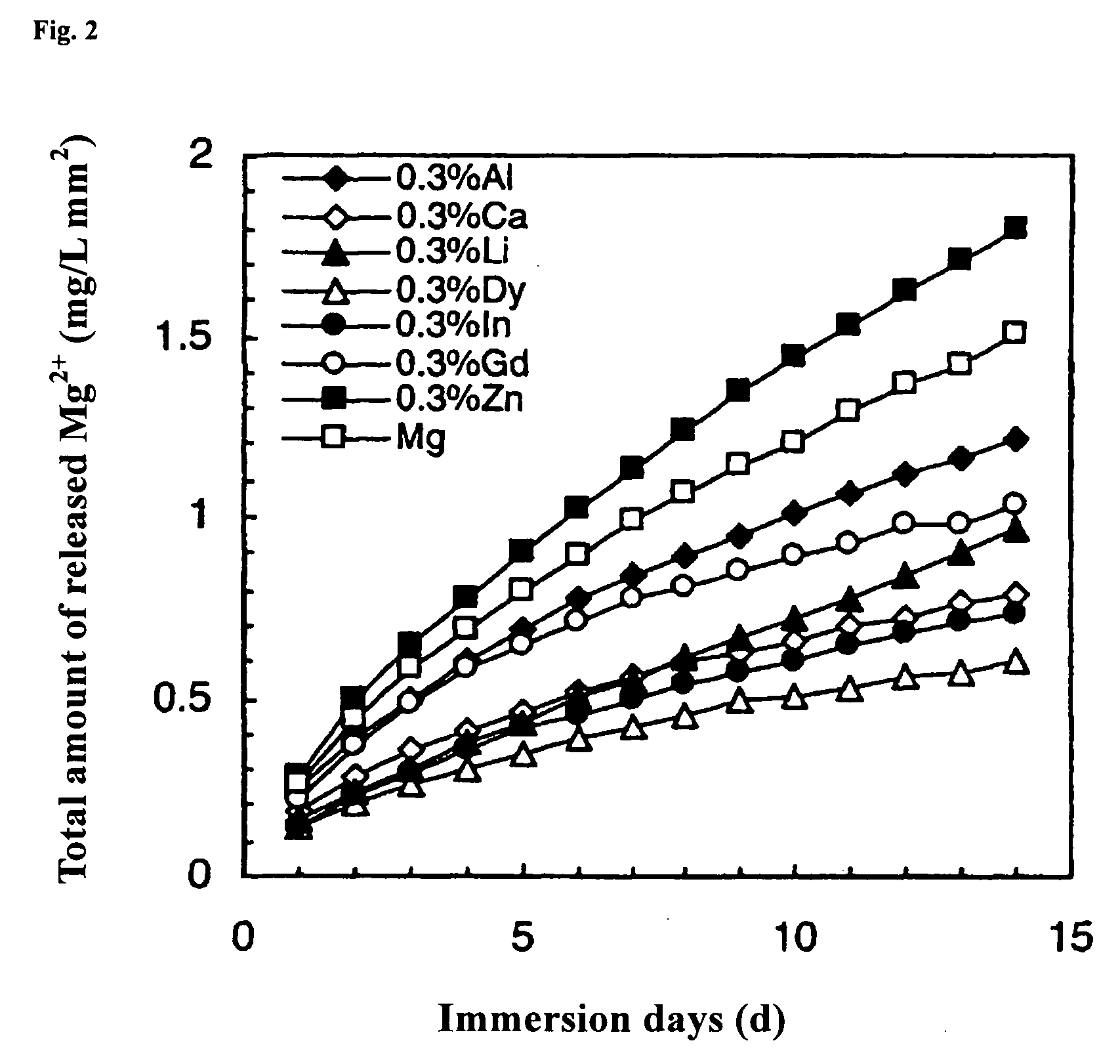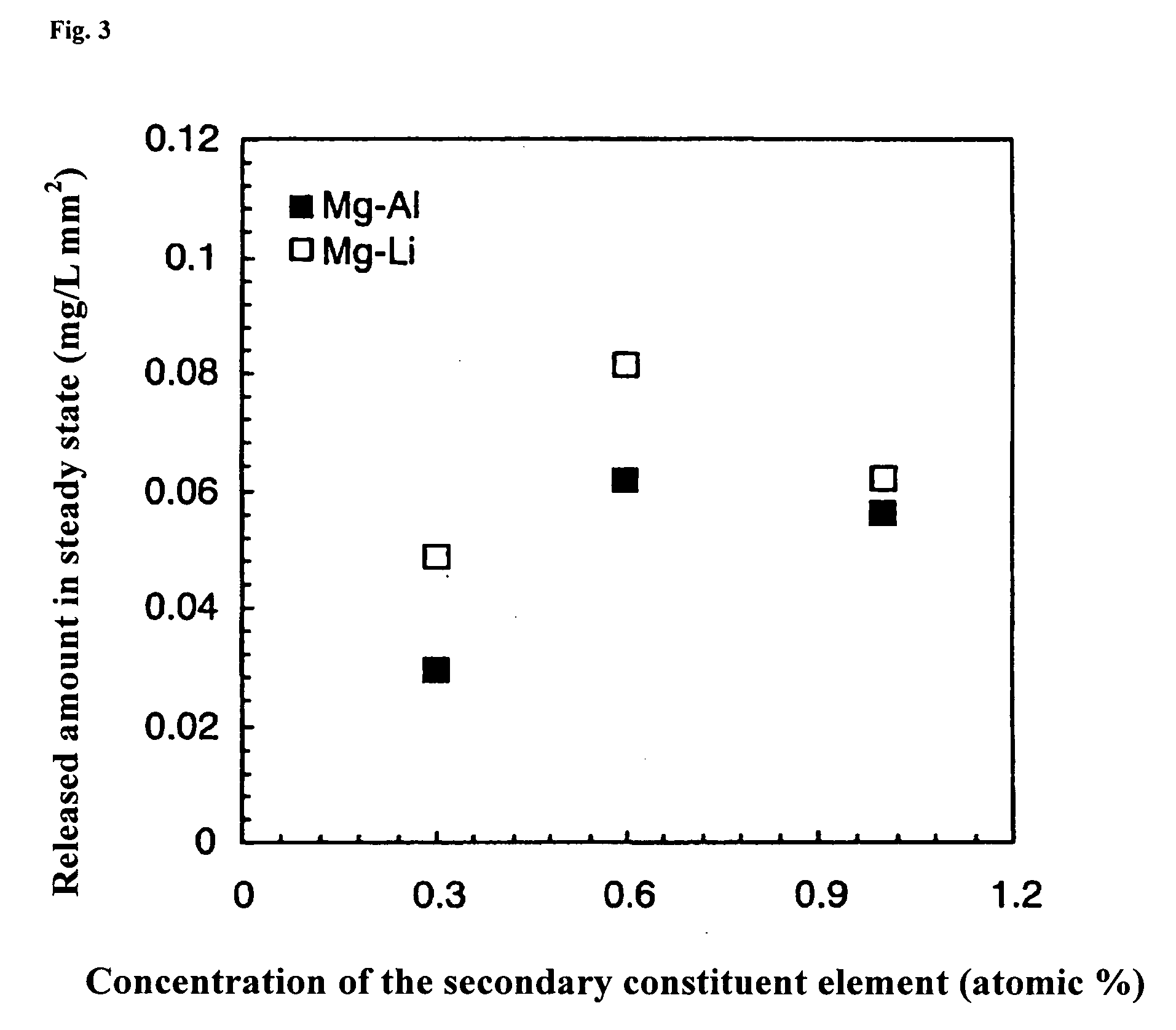Magnesium-Based Biodegradable Metallic Material
a biodegradable, metal technology, applied in the direction of prosthesis, instruments, blood vessels, etc., can solve the problems of insufficient bone restoration, insufficient bone restoration, and inability to remove the device by reoperation, so as to reduce the thickness and reduce the strength
- Summary
- Abstract
- Description
- Claims
- Application Information
AI Technical Summary
Benefits of technology
Problems solved by technology
Method used
Image
Examples
example 1
[0114]Pure magnesium (3N5) was subjected to severe working by extrusion (extrusion ratio 18) at 94, 180, 268° C., respectively, to adjust the average grain size to 5, 50, and 200 μm. The top, bottom, and the side surface of these specimens (oval shaped, approximately 4 mm in width, 14 mm in length, and 2 mm in thickness) was polished up to No. 600 of a waterproof polishing paper with ethanol, and then, washed with acetone and sterilized. In a 5% CO2 incubator maintained at 37° C., the specimens were immersed for 14 days in a cell culture medium (E-MEM+10% FBS) of 27.5 mL, using a sterilized glass bottle, and then quantitative analysis of the magnesium ion released into the culture medium was performed by the Xylidyl Blue method.
[0115]A 15 mL portion of the culture medium was replaced every day, and the collected portion was used for the quantitative analysis of the magnesium ion.
[0116]The environment of 37° C. and 5% CO2 is close to the condition inside the human body, and the used ...
example 2
[0120]Pure magnesium (3N5) and eight kinds of the magnesium alloys containing 0.3 atomic % of Al, Ca, Y, Li, Dy, In, Gd, or Zn were subjected to the severe working by extrusion at 90, 160, 240, 310, 85, 275, 140 and 185° C., respectively, (extrusion ratio 18 for pure magnesium and the alloys containing Zn; and extrusion ratio 25 for other seven kinds of magnesium alloys) to control the average grain size as approximately 1 μm. Tensile tests of these materials were performed and their results were shown in Table 1. Tensile tests of casting materials of the alloys containing Y and Ca at 0.3 atomic % (average grain size equal to or more than 100 μm) were performed and their results were also shown in Table 1.
[0121]For comparison, Table 2 illustrates mechanical properties of existing magnesium alloys described in ASM Specialty Handbook, Magnesium and magnesium alloys, (Materials Park, Ohio, ASM International, 1999), p. 170.
example 3
[0122]The results of the measurement for the distribution of the elementary concentration by high resolution observation and nano-EDS of the alloys containing Y, Ca, or Al of 0.3 atomic % prepared under the same conditions as those in Example 2 were shown in Table 3. Uneven distribution was confirmed as follows: the alloy containing Y gave 0.9 atomic % in the vicinity of the grain boundary, that is, 3 times of the average concentration 0.3 atomic % within the grain; the alloy containing 0.3 atomic % of Ca gave 0.74 atomic % in the vicinity of the grain boundary, that is, 2.7 times of the average concentration of 0.27 atomic % within the grain; and the alloy containing 0.3 atomic % of Al gave 0.49 atomic % in the vicinity of the grain boundary, that is, 1.4 times of the average concentration of 0.34 atomic % in the grain.
TABLE 1Mechanical properties of the developed magnesiumalloys investigated by tensile testsYieldTensileFracturestrengthstrengthelongationAdded element and amount(MPa...
PUM
| Property | Measurement | Unit |
|---|---|---|
| metallic radii | aaaaa | aaaaa |
| grain sizes | aaaaa | aaaaa |
| grain size | aaaaa | aaaaa |
Abstract
Description
Claims
Application Information
 Login to View More
Login to View More - R&D
- Intellectual Property
- Life Sciences
- Materials
- Tech Scout
- Unparalleled Data Quality
- Higher Quality Content
- 60% Fewer Hallucinations
Browse by: Latest US Patents, China's latest patents, Technical Efficacy Thesaurus, Application Domain, Technology Topic, Popular Technical Reports.
© 2025 PatSnap. All rights reserved.Legal|Privacy policy|Modern Slavery Act Transparency Statement|Sitemap|About US| Contact US: help@patsnap.com



